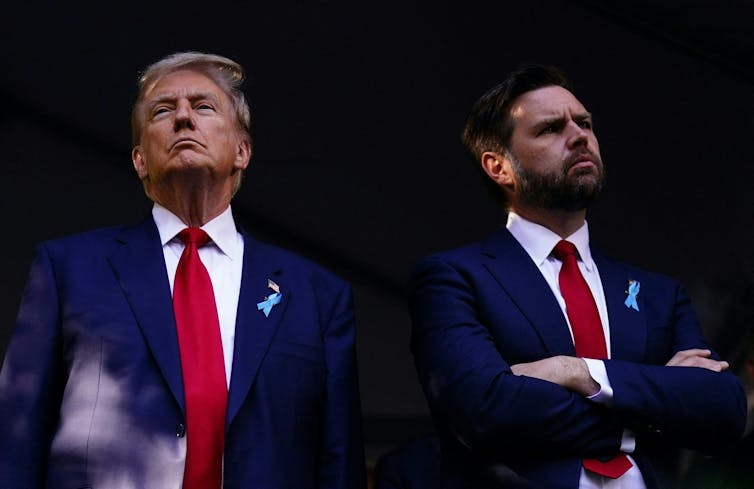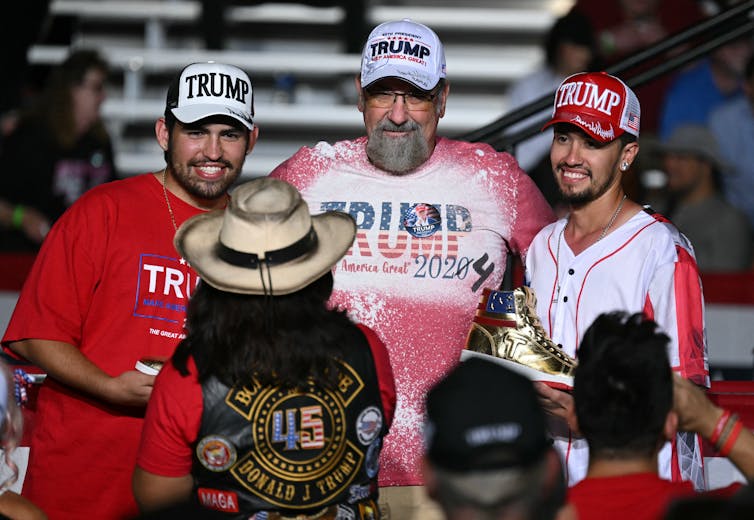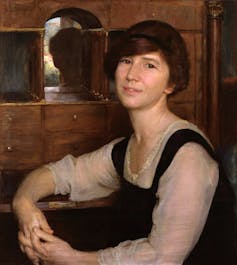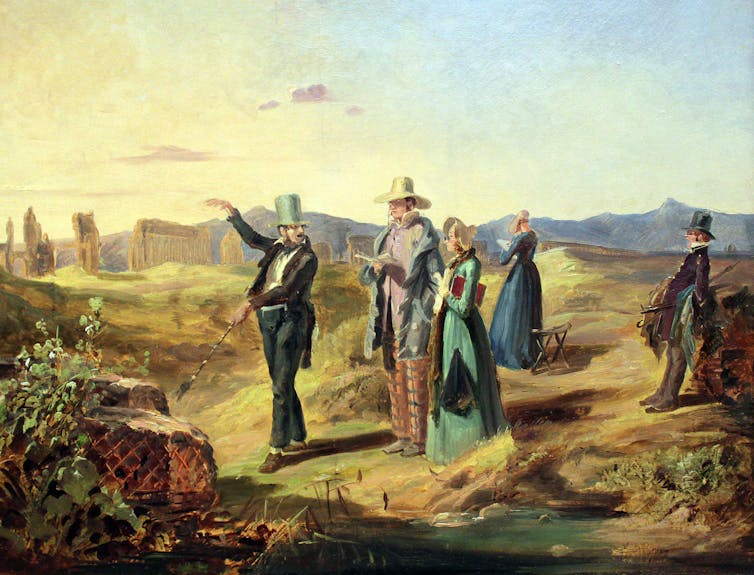For many people, especially those leaning left, Donald Trump’s disqualifications to be president seem obvious. Why did so many people vote for Trump again, they wonder, and how did he win not just the Electoral College vote this time but the popular vote as well?
Trump’s critics cite his two impeachments, multiple criminal indictments at the state and federal levels and a felony conviction as evidence that he is unfit to be president again. Opponents also say that Trump is a threat to democracy, a misogynist, racist, a serial liar and a rapist.
About 78% of Democrats and Democrat-leaning independent voters say that Trump broke the law when he allegedly tried to overturn the 2020 election results. But less than half of Republicans think he did anything wrong.
I am an anthropologist of peace and conflict, and I have been studying what I call the Trumpiverse since 2015, when Trump descended a golden escalator and announced his candidacy for president. I later wrote a related book in 2021, called “It Can Happen Here.”
More recently, I have been examining toxic polarization – and ways to stop it. Many efforts to reduce people’s polarized views begin with an injunction: Listen and understand.
Why did people vote for Trump?
To this end, I have attended Trump rallies, populist and nonpartisan events and meetings where Democrats and Republicans connect and talk. Along the way, I have spoken with Trump supporters ranging from the Make America Great Again, or MAGA, faithful to moderate “hold the nose and vote for him” conservatives.
And indeed, many on the left fail to understand who Trump voters are and how they vary. Trump’s base cannot simply be dismissed as racist “deplorables,” as Hillary Clinton famously said in 2016, or as country bumpkins in red MAGA hats. Trump voters trend older, white, rural, religious and less educated. But they include other groups, including Latinos and male voters.
Many people have thoughtful reasons for voting for Trump, even if their reasoning – as is also true for those on the left – is often inflamed by populist polarizers and media platforms.
Here are five key lines of reasoning that, in varying combinations, informed the choices of Trump voters.
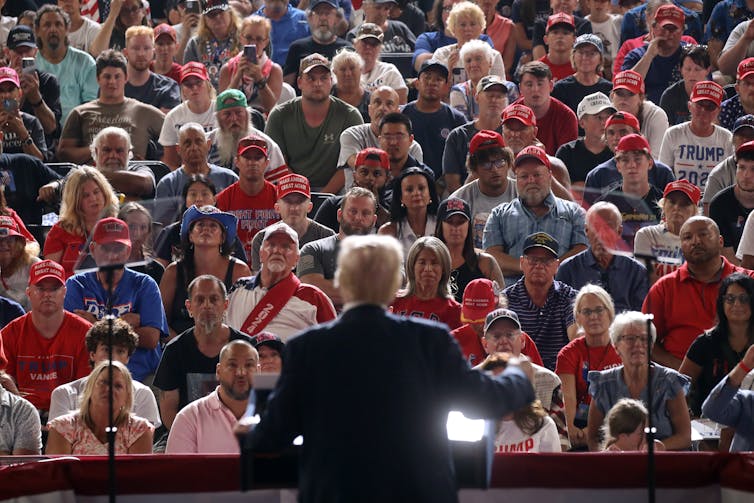
1. Media distortion
Where those on the left see Trump’s many failings, those on the right may see what some political observers call Trump Derangement Syndrome, sometimes simply called TDS.
According to this argument, the left-leaning media dissects Trump’s every word, and the media then distorts what he says. I have found that some Trump supporters think that people who feed too much on this allegedly biased media diet can get TDS and develop a passionate, perhaps illogical dislike of Trump.
I have also heard hardcore Trump supporters argue, with no evidence, that “fake news” media outlets, like CNN, are part of a larger deep state plot of the federal government to upend the will of the people. This plot, according to those who propagate it, includes not just leftists, government bureaucrats and people who claim to be Republicans but really aren’t, but also people in law enforcement.
Some Trump supporters also see merit in his contention that he is being wrongly persecuted, just as some see the Jan. 6 defendants being persecuted.
2. Bread on the table, money in the bank
“Are you better off than you were four years ago?”
For many Trump voters, the answer to Ronald Reagan’s famous question is clear: “No.”
They accurately remember Trump’s term as one of tax cuts, economic growth and stock market highs.
It is true that overall employment numbers and average pay went up under President Joe Biden. But for some Trump supporters, that economic boost pales in comparison to the massive surge in inflation during Biden’s term, with prices rising almost 20%. While the inflation rate has recently abated, prices remain high – as voters are reminded every day at the grocery store.
At the end of the 2024 campaign, polls showed Trump with a strong lead over Democratic presidential nominee Kamala Harris on how to handle the economy. The economy was a top concern for voters, especially Republicans, and ultimately drove many voters to Trump.
3. A border invasion
Another reason some Americans voted for Trump: immigration.
Like inflation, the number of people illegally crossing the border soared under Biden.
This massive influx of “illegal aliens,” as Trump calls them, dropped to its lowest level in four years in July 2024. This happened after the Biden administration made it harder for immigrants to apply for asylum at the U.S.-Mexico border, a policy measure that is in line with many Republicans’ approach.
In 2022, a poll found 7 out of 10 Republicans worried that “open borders” were part of a Democratic plot to expand liberals’ power by replacing conservative white people with nonwhite foreigners.
Trump played into some people’s mostly false concerns that immigrants living illegally in the U.S. are freeloaders and won’t assimilate, as illustrated by his untrue September 2024 allegations that immigrants were eating pets in Ohio.
In 2022, 82% of Republicans said they viewed immigration as a “very important” issue. Trump continues to tout his proposed solution, which includes shutting the border, building a wall and deporting 11 million immigrants who are living in the U.S. without legal authorization.

4. A proven record
Beyond the economy and immigration, some Trump voters simply compared the records of Trump and the Biden-Harris administration and found that the tally tilted firmly toward Trump.
There were no new wars under Trump. Biden-Harris, in contrast, have been saddled with Russia’s invasion of Ukraine and Israel’s invasion of the Gaza Strip. Trump supporters’ perception is that American taxpayers foot a large portion of the bill, even though other countries are also giving money to Ukraine, and Israel is actually buying weapons from the U.S.
I have found that Trump supporters also think he is better suited to deal with the rising power and threat of China. Finally, abortion opponents believe he delivered by appointing Supreme Court justices who overturned Roe v. Wade.
5. The MAGA bull in a china shop
While some Harris supporters lamented Trump’s destruction of democracy and decency in politics, I have found that Trump voters see a charismatic MAGA bull in a china shop.
His supporters wanted Trump elected precisely because he is an unrelenting pugilist, or a fighter – as he showed when he raised a fist after the July assassination attempt against him.
Some in the Trumpiverse even view him as savior who will rescue the U.S. from a “radical left” apocalypse.
For Trump stalwarts, MAGA is not simply a slogan. It is a movement to save an America that is on the brink of failure.
Alex Hinton, Distinguished Professor of Anthropology; Director, Center for the Study of Genocide and Human Rights, Rutgers University - Newark






